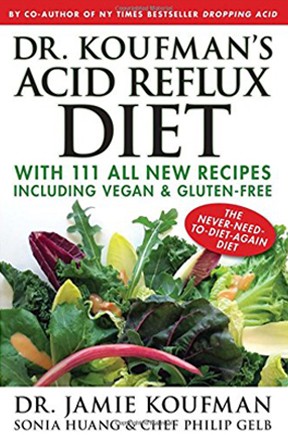At-A-Glance
- Human beings naturally prefer foods that are high in protein, fat, sugar, and salt since most animals, including humans, are genetically-designed to avoid starvation.
- Unlike alcohol addiction in which the alcoholic eventually drinks so much that s/he falls asleep (and thus quits drinking), there is no end with sugar addiction — the more, the better.
- Learn to read package labels; there is sugar in 80% of the products in your grocery store. Extra sugar is added to almost everything, even things like bread and milk.
- Follow my seven step strategy for breaking your sugar addiction.
Sugar Sugar Everywhere and Nothing Left to Eat
While at first blush, sugar addiction doesn’t seem to be an obvious cause of acid reflux. But it is, because overeating, obesity, and especially night snacking are big risk factors for reflux. In fact, probably the number one risk factor for respiratory reflux (LPR) is eating too close to bedtime. If you have reflux, night snacking is the kiss of death!
While I could try to make a claim here that there has been a colossal food-industry collusion ― to get all of us addicted to their food through sugar ― that “cabal” ship has sailed, because sugar addition has been a massive public health problem for two generations now. Spoiler alert: I was once a 207-pound, junk-food sugar-junkie.
So, breaking your sugar addiction is not just about your reflux, but it is a crucial variable in the fight against diabetes and obesity as well. This topic is covered in my book, Dr. Koufman’s Acid Reflux Diet.
Yes Virginia, They Put Sugar in Everything
Sugar is everywhere. It can be found in almost everything we consume. As a result, most Americans are addicted to sugar, particularly in the form of soft drinks, snack foods, and bread. Indeed, when soft drinks were becoming popular in the 1970s, that’s when the obesity epidemic started to explode.
Where’s all that sugar? Our love of bread has us eating it for breakfast, lunch, dinner, and snacks. Bread is sugar. If you’re obese, I suggest that you remove bread and all refined sugar from your diet. Replace it with complex carbohydrates and fruit instead, albeit in reduced amounts. Remember, America’s addiction to bread/sugar is the number one cause of obesity and diabetes today.
A few years ago, I went to the largest grocery store I could find, and the cereal aisle stretched as far as the eye could see. After several minutes searching, I was unable to find a single breakfast cereal that did not contain sugar. I bet there were 10,000 boxes of cereal on those shelves. So I found and asked the store manager if they carried any cereals that didn’t contain sugar.
The answer was “no,” although there were many products claiming “reduced sugar.” There may be some organic cereals now with no added sugar; I did not go back to look. Meanwhile most breakfast cereals are loaded with sugar, especially the ones your children love.
Sugar addiction and food addiction may be the same thing, or at least related. But overcoming sugar addiction is much like quitting smoking or alcohol; however, cutting back slowly and incrementally can work effectively with sugar addition. It’s possible to break sugar addiction, but for many the process is painful, and, as with smoking and alcohol, there is a risk of relapse.
When I was a sugar addict, more than twenty tears ago, I would just keep on eating sugar in the evening almost till bedtime. “Those ice cream sandwiches are so small, I think I’ll have a third.” My quitting sugar strategy was to first clean out my house … and then stock it with mostly high-sugar fruits. At first, I had a love affair with Medjool dates. I ate too many at the start, but within a week or so, I could limit them to five … and later to two or three … and then I switched over most of the time to figs, apples, and pears as my “sugar kick” choices. Here are my seven steps for breaking sugar addiction.
Seven Steps for Quitting (or Reducing) Sugar
1. Cleaning Out Your House
Breaking your sugar addiction is a process that can start with cleaning out your house. If you are going to really eat healthy, get rid of the cookies, snack foods, ice cream, and all of the other sugary foods and beverages. Removing high-sugar foods and drinks from your environment reduces the temptation you’ll feel when you see them around. Good luck!
2. Get High-Fructose Corn Syrup Out of Your Diet
If HFCS is an ingredient in any of your food, get rid of it. I also suggest that you abstain from bread, pasta, cookies, cakes, energy bars, doughnuts, and everything else you know that contains wheat and sugar. And yes, you really do have to quit bread, at least at the beginning. Bread is sugar. Hmm, here’s a compromise … maybe a GF bagel and lox once a day is okay; see my Snack Blog.
In addition, stop eating sugary breakfast cereals; many have sugar as the number one ingredient. Instead, substitute gluten-free oatmeal with raisins and banana, or other breakfast items that are sugar-free. I recommend Low-Acid Smoothies as an excellent alternative breakfast that you can make at home.
3. Read Package Labels Especially for Your Staple Items
Go to your supermarket and look at the labels (ingredients) for all foods you commonly purchase, including condiments, soups, broths, canned, and baked goods. You may be surprised to find that all of them contain sugar, and in many cases, sugar is listed as one of the main ingredients. Ketch-up anyone?

Take time to scrutinize all of the nutritional information on the staple food items in your home. Chicken stock, for example, usually has added sugar. Make your own stocks and recipes or look for brands that don’t have sugar. Unfortunately, ketchup is problematic for both its acidity and sugar. Consider eliminating it from your diet.
4. Stop Drinking ALL Soft Drinks
If you’re still drinking soft drinks, stop! With sugar? Too much. Sugar-free? Too acidic; see Dropping Acid. Drink water, and have coffee and tea in moderation. If you’re going to drink iced tea, make it yourself and maybe don’t use an artificial sweetener. Train yourself to enjoy unsweet tea.
5. When You Crave Sweets or Bread, Think Fruit
During the first few weeks of bread and sugar abstinence, you can satisfy sugar craving by eating fruits such as figs, dates, bananas, and red (especially Fuji) apples. Organic medjool dates are loaded with sugar, and I suspect that two or three are equivalent to the sugar in a candy bar. It’s okay if you eat more than three at the beginning, but after a few weeks gradually reduce your sugar intake and stick with just one or two for a snack or dessert.
6. Substitute Good (Better) Starches for Bad Ones
You can satisfy your craving for carbohydrates with potatoes, rice, and gluten-free, sugar-free chips or crackers. Read labels to make sure that there are no trans fats in any of these items. Sweet potatoes, rice, and baked potatoes are an excellent carb alternative to sugar — and baked potatoes are best consumed with olive oil rather than butter or sour cream.
7. Begin to Reduce Your Overall Reliance on Carbohydrates, Including Complex Carbohydrates.
You’ll find that your body prefers protein and good fats. Eggs, poultry, fish, avocado, olive oil, rice, tofu, low-acid fruit, vegetables, most nuts, seeds, and salads will become your healthiest go-to foods. And in particular, make fruit your go-to dessert.
Finally, here’s a Dr. K egg tip: When I make a three-egg omelet, I use only one yolk and throw away two; the one yolk is enough for flavor, but much less cholesterol. Think your diet through; make changes that will improve your health — and it doesn’t need to me done all at once.
Good luck!
Resources
Learn more about the way food affects your energy level, mood, body, and body weight.
Wheat Belly book by William Davis, MD
The China Study book by T. Colin Campbell, PhD and Thomas M. Campbell II, MD
Forks Over Knives website and Prime documentary of the same name
What the Health documentary available on Netflix
Launching a Food Revolution Jamie Oliver’s TED Talk









